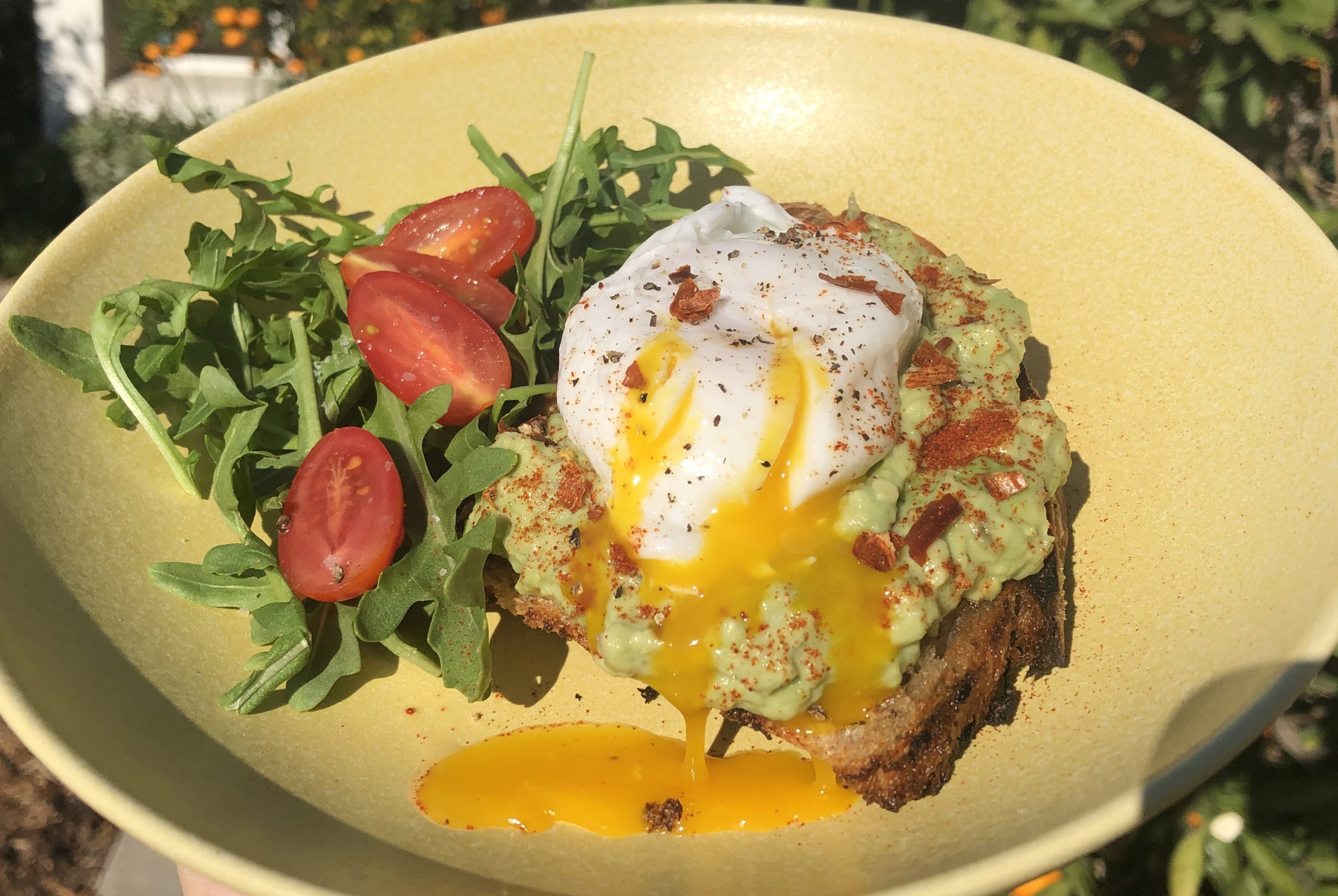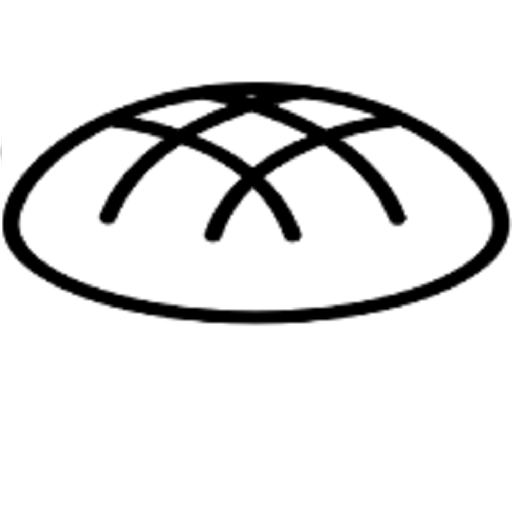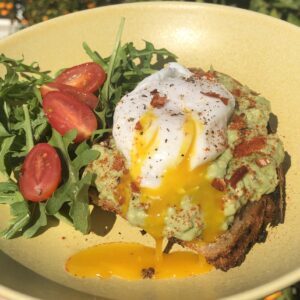0 Comments
share this

My youngest daughter's boyfriend is a foodie, which is a must in our family. He also enjoys cooking which is an added bonus. When I was growing up, my parents had a special egg poacher. There were these plastic cups that nested into a special holder that acted as a double boiler and the eggs poached into a dome shape. The advantage of that poacher was no loss of egg white, and you could make multiple eggs simultaneously. However, the poached eggs tended to have a rubbery texture! I remember a few years ago, my daughter's boyfriend called me from New York asking me how to poach an egg. I explained to him the basic technique and what was important. Several years and many dozens of eggs later, he has mastered how to make the perfect poached egg! The above picture was breakfast with roasted garlic and herb sourdough. The poached egg was cooked to perfection!
Poaching eggs should be done one at a time which makes it difficult when feeding a crowd. You can add multiple eggs into a larger saucepan of water, but the swirling technique helps keep more of the egg white coagulated around the yolk rather than spreading in the water.
Tips.
Fresh, refrigerated eggs.
When poaching eggs, use fresh, refrigerated eggs. The egg whites of fresh eggs and cold eggs are "firm" rather than runny. Over time, the egg whites become loose and runny. Egg whites also become more runny as they are brought to roome temperature, perfect for meringue and pavlova, but not for poached eggs.
Salt and acid.
Salt and acidic water is needed to prevent making "egg drop soup", instead of poached eggs. You can read about the actual science behind the behavior of eggs whites and acids but basically, the salt and acid helps coagulate the egg whites faster before it has time to disperse.
Crack egg into small container before poaching.
It is easier to add the egg to the swirling water when the egg is in a container than trying to crack an egg directly into the water. This also ensures more control when adding the egg and knowing that the egg is intact.
Swirl the water.
Create a vortex in the water by stirring the water in one direction. Carefully slide your egg into the vortex. The swirling motion of the water helps keep the egg whites close to the yolk rather than feathering out in the water.
POACHED EGGS
Ingredients
- 1 large egg cold
- ⅛ tsp salt
- 2 tsp vinegar
Instructions
- Crack egg into a bowl
- In a small saucepan, boil enough water so that egg will float
- Add salt
- Add vinegar
- Using a spoon, start stirring the water to create a vortex in the center of the water.
- Pour egg into the center of the vortex
- Cook uncovered at a rolling boil for 2 minutes
- Remove the egg from the saucepan using a strainer or ladle.
- If using an unslotted spoon, remove water before placing egg on plate. This is for a soft poached egg. Egg will be very runny
Medium poached egg
- Boil egg for 3 minutes. Egg yolk will be slightly runny.
Hard poached egg
- Boil egg for 4 minutes. Egg yolk will be solid.
Video
Nutrition
DON'T MISS A RECIPE

